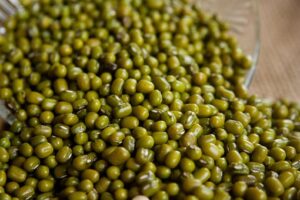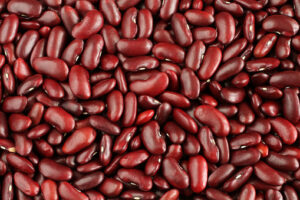Lentils : We eat lentils around the world because they are one of the oldest cultivated legumes. Our diets contain a lot of fibre and protein from lentils. Additionally, they cook faster because of their smaller size compared to beans, since they do not need soaking before cooking. As a source of high-quality protein, lentils are highly versatile and inexpensive.
As organic lentil suppliers have increased, exports have steadily increased. Organic & Conventional Lentils are available from Aarug Agro. Among the Indian Aarug Agro manufacturers, they are the pioneers. The following is a breakdown of their nutritional content. They are affordable, easy to cook, and extremely healthy. In one serving of lentils, there are about 230 calories, 18 grams of protein, 1 gram of fat, 16 grams of fiber, and 1 gram of fat. If you include this legume in your diet, you will benefit from:
The fiber : It is beneficial to maintain blood sugar levels and cholesterol levels by eating lentils because they contain both soluble and insoluble fibre. As a result, heart disease and strokes are reduced.
The protein : Our stomachs are kept full and our bodies are provided with energy all day long thanks to protein. The importance of proteins for building muscles lies in their ability to aid in muscle wear and tear.
The energy : The combination of fibre and complex carbohydrates in lentils makes them an excellent source of slow-burning energy.
The vitamins and minerals in food : Vitamins and minerals found in lentils are very beneficial to humans. In lentils, for instance, the magnesium content keeps the body energized and helps keep the blood flowing.
Lentils are available in the following types and benefits:
The black-eyed pea : There are more nutrients in one cup of black-eyed peas than in a Caesar salad! There are 198 calories in black-eyed peas, along with 1 gram of healthy fat, which is necessary on a daily basis. A very important aspect of Black Eyed Peas is its fiber content, which has been shown to reduce cholesterol levels in patients with heart diseases and heart conditions. In addition to being an essential part of a balanced diet, Black Eyed Peas contain a high sodium content.

The chickpea : Throughout India and the UK, chickpeas are an important part of the diet. Bodybuilders who are vegetarians trust this type of cereal for its high protein content. Healthy fats and thiamine are found in chickpeas. Bengal gram is another name for them. Among the leading suppliers of chickpeas in India is Aarug Agro India.

The brown chickpea : Chickpeas of this type are dark brown in color and smaller in size than yellow chickpeas. An average half cup of brown chickpeas provides 360 calories, 5 grams of fat, 60 grams of carbohydrates, 17 grams of fibre, and 19 grams of protein. When made into soups during sickness, brown chickpeas are a great addition. As well as eating them raw, they can also be boiled a bit.

(chana dal) Chickpeas split : Soluble fibre in chana dal is an important source of manganese, copper, protein, folate, B vitamin B1, phosphorus, B vitamin B5 and potassium. Due to their taste, split chickpeas are used to make eatables in India. In many dishes, they also serve as taste enhancers. As a basic necessity, split chickpeas have high protein and vitamin content. In addition to providing energy, Split Chickpeas contain vitamins and minerals that are vital to diabetics since they have a low sugar level.
The whole moong bean : In addition to having an amazing taste, whole moong beans are also available as seedlings or as peas. There are a few shops that sell whole moong beans in the US, but they are not as popular as in India. Nutritional supplements are abundant in moong legumes. When a handful of lentils are consumed, a person is satisfied. A basic component of every Indian’s staple diet, these legumes are high in taste.

Moong Dal : In order to make moong dal, a whole moong vegetable must be divided. This little green-colored lentil makes up moong (green lentil). The Moong Dal tastes delicious and has a firm-tender texture. Because of their yellow-green color, they are also called yellow-green lentils.

Split pigeon peas (Toor Dal): Since almost centuries, toor dal has been used as an ingredient in sauces and Indian dals as well as curries. Since they do not have a safety cover, they take less time to prepare. Added to soups, sauces, and soups, toor dal is perfect for adding heartiness and taste.

Kidney beans: Unless they are pre-soaked and warmed to a steaming point for at least 10 minutes, raw kidney beans contain high levels of nutritional values and are therefore more harmful than most other vegetable types. People get a bad rap about beans making them gassy, but that doesn’t mean you should avoid them. It is beneficial to your overall health to consume up to three glasses of beans each week, according to nutritionists.

Red Lentils: Peas may be the earliest legume harvested in history. Despite their size, lentils are a health all-star. Their fibre content and protein content makes them a good meat alternative for vegetarians. Also, they are high in vitamin B, folic acid, metal, phosphorus, magnesium, zinc oxide, and potassium.

Whole black lentils: In addition to its beneficial effects on the heart, lentils also contain magnesium. Calcium mineral route blocker magnesium is nature’s own calcium mineral route blocker. During adequate mineral magnesium intake, blood vessels and bloodstream breathe a sigh of relief, which reduces resistance and boosts blood circulation, fresh air, and also are beneficial throughout the body.


